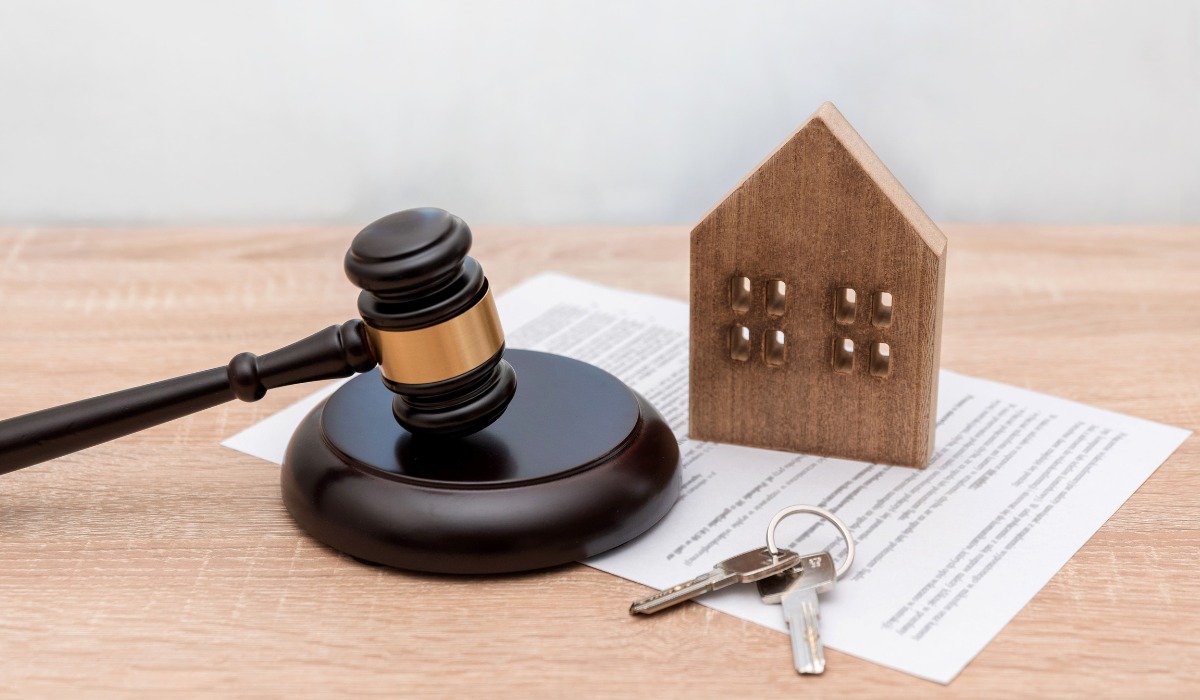When most of us buy a property, the first thing we check off the list is registration. Once our name is on that paper, we feel a sense of security, as if we’ve officially sealed the deal and the property is now unquestionably ours.
But a recent Supreme Court judgment has thrown a wrench into that assumption. It turns out, registration alone might not be enough to guarantee ownership. That piece of paper may not always protect your claim. The ruling raised a critical point: legal ownership isn’t just about registration, it’s about rightful title, documentation, and the legitimacy of the seller’s claim.
This article will walk you through all the important and smart steps you need to take when you’re in the process of buying a property. We’ll walk you through the real legal essentials: from verifying past ownership and financial liabilities to completing the necessary municipal updates and collecting documents that most people don’t realize they need.
The Bhavna Cooperative Society case: What happened?
The recent Supreme Court case involved Bhavna Cooperative Housing Society in Telangana. In 1982, the society entered into an unregistered sale agreement to purchase a large parcel of land. Years later, they used that document to register sale deeds and sell parts of that land to others.
The issue? The original agreement was never registered. According to the law, that meant the society never legally owned the land, so they had no right to sell it.
The Supreme Court made it very clear:
- You cannot sell something you never legally owned, even if you later register it.
- An unregistered sale agreement does not serve as valid proof of ownership.
- Buyers must look beyond registration and confirm that the seller has a clear legal title.
This ruling sent shockwaves through the real estate market, leaving many wondering: “If registration isn’t enough, what is?”
Here is what you need to do to avoid such a legal dispute later:

Conduct a thorough title search
A title search isn’t just paperwork. It’s how you find out if the seller has the right to sell the property in the first place.
Here’s what you should be digging into:
- Who owns it? Not just on paper, but legally and undisputedly.
- Are there any family disputes, legal battles, or hidden heirs?
- Was it ever pledged as collateral for a loan? Is it still mortgaged?
- Were earlier sales properly recorded? Or was anything skipped or done under the table?
You can visit the sub-registrar’s office to access past ownership records and sale deeds. Some states even offer online access.
Consult a legal expert
It is always highly recommended to consult a legal expert to verify the seller’s ownership. Here is a list of documents you should ask for from the seller and have your lawyer verify for you:
- The sale deed (if they had purchased the property)
- Possession and allotment letters (especially for builder flats or society allotments)
- A registered will or succession certificate (if inherited)
- Property tax receipts confirming lawful possession and payment history
Verify encumbrances and financial liabilities
It is essential to verify that the property is free from financial obligations. This includes unpaid loans, legal claims, or unresolved liabilities.
You can apply for an Encumbrance Certificate (EC), which reveals:
- If the property was used as collateral
- If it is under a mortgage
- Any pending legal cases or outstanding dues
- Whether third-party claims or restrictions existThe EC can be obtained from your local sub-registrar’s office or online in states where digital land records are accessible.
Mutation – Making it official in government records
Mutation is a step that comes after the registration and after you’ve taken possession of your property. It is essential to complete the mutation process, as it updates the local municipal records to reflect your ownership.
Mutation is necessary for:
- Paying property tax under your name
- Getting official connections for water, gas, and electricity
- Preventing confusion in future transactions or disputes
Until this is done, government records might still show the previous owner, which might create unnecessary complications later.
Invite claims
If you’re eyeing a property that’s inherited or has had disputes in the past, it’s a smart move to publish a public notice in a local newspaper stating your intention to buy it. Many property lawyers recommend this as a good practice, especially for older properties or those coming through succession. It shows that you’ve done your due diligence, and in case of a dispute later, courts often view such transparency in your favour.
Verify with the bank
Consider checking with banks and financial institutions to confirm if:
- The property is listed as collateral for any loan
- There are recovery notices or pending financial charges
- It appears in any loan fraud or flagged property databases
Banks often maintain internal due diligence records that may not show up in public records. Cross-verification here can uncover hidden risks.
How to get your property registered properly?
After completing your checks, the final step is registration. This officially transfers the property to your name under the Registration Act of 1908.
Here’s a step-by-step guide to help you register your property correctly and in compliance with the law:
- Visit the sub-registrar’s office for the area where the property is located.
- Review the sale deed thoroughly and cross-check the names, property size, address, and terms.
- You need to carry Government-issued IDs such as Aadhaar, PAN, along with Passport-sized photographs, the Original sale deed, and supporting documents.
- Pay the stamp duty and registration fees.
On the day of registration:
- Both buyer and seller, plus two witnesses, must be physically present.
- Sign the documents in front of the registrar.
- Ensure thumb impressions and verification steps are complete.
Once done, collect a certified copy of the registered sale deed. This serves as your legal proof of ownership along with the other documents.
How to ensure the property is not a Benami transaction?
A benami transaction occurs when a property is purchased in someone else’s name, while the actual beneficiary conceals their identity. Such transactions are illegal under the Benami Transactions (Prohibition) Act, and the government has the authority to seize any property involved in such deals.
To protect yourself:
- Use government-issued ID cards to confirm the seller’s identity: Ask for government-issued identity cards such as Aadhaar, PAN card, and previous sale deeds to confirm ownership.
- Ensure payment alignment: The payment must be made by the same individual whose name appears on the sale deed.
- Avoid third-party cash payments: Avoid cash or indirect payments to ensure a legally valid transaction record.
Importance of site visit and possession verification
Certain issues cannot be uncovered through documentation or online listings. That’s why visiting the property in person is crucial before finalizing any deal. Here’s how an on-site visit helps ensure your purchase is a smart one:
- Confirms physical possession of the property: Physical verification shows the real authority over the property. It’s always essential to see if the seller has actual possession of the property or if the property has been occupied by someone else, such as a tenant, relative, or third party. This helps prevent future disputes over unauthorized occupancy.
- Physical inspection for encroachments or boundary irregularities: Certain issues, like illegal extensions or boundary disputes, might not reflect in official paperwork but become apparent during an on-site check. Identifying them early can save you from future legal trouble.
- Cross-verify layout, construction, and condition: A visit allows you to match the property’s layout, room dimensions, and structural quality with what is mentioned in the approved building plan or sale deed. It also helps you spot any unauthorized modifications or construction quality issues.
- Evaluation of infrastructure and major insights from locals: During physical verification, you must inspect the quality of access roads, drainage systems, water and electricity supply, and the overall condition of the area. While you’re there, take time to speak with neighbors or the resident welfare association. They can provide detailed insights on the locality and the property that documents might not cover.
What to do if the title is not clear?
An unclear property title can cause serious legal issues later. It is caused due to vague documentation, unresolved inheritance claims, or previous ownership transfers that were not legally valid.
Here’s what you should do if you’re unsure about the title:
- Pause on the deal: Don’t make any payments until you’ve checked everything thoroughly.
- Ask for the full ownership trail: Request all documents showing how the property changed hands, including past sale deeds, wills, gift deeds, and partition deeds.
- Get an Encumbrance Certificate: This will verify if the property has any legal cases, outstanding loans, or third-party claims.
- Consult a property lawyer: They can help assess if the title can be legally cleared or if it’s best to walk away.
- Consider title insurance: It’s not always available, but if you can get it, title insurance can protect you from unexpected claims in the future, even after the deal is done.
If the doubts around ownership don’t go away even after all this, it’s safest to step back.
Checklist: Must have documents for full ownership
The Supreme Court’s ruling has made it clear: ownership is about more than just registration. These documents serve as your legal foundation:
- Completion Certificate (CC)
Confirms the building was constructed as per approved plans and meets municipal guidelines.
- Occupancy Certificate (OC)
Certifies that the property is ready for occupation and meets safety and infrastructure norms.
- Title Deed
Shows the seller’s legal right to transfer the property. Must be verified for a clear, marketable title.
- Sale Deed
The legal document that officially records the ownership transfer. Must be registered.
- Encumbrance Certificate (EC)
Reveals any financial dues, loans, or legal issues tied to the property.
- Mutation Certificate
Updates your name in local records for tax and civic purposes. Confirms ownership in government databases.
- Possession Letter & Allotment Letter
Confirms that you’ve received physical possession of the property, vital for builder flats or new developments.
- Property Tax Receipts
Ensure previous dues are cleared. Needed for utility setup and tax compliance.
- Registered Will / Succession Certificate (if inherited)
Always ask for this if the property was inherited. It confirms the seller’s legal right and avoids family disputes.
- Title Insurance
Title insurance offers added legal protection by covering potential claims or defects in the property’s ownership history. It’s especially useful when there’s any uncertainty about the title or the transaction involves inherited or previously disputed property.
Housing.com POV
The Supreme Court’s recent ruling has highlighted a critical truth: while property registration is necessary, it doesn’t, by itself, establish full legal ownership. What truly secures your property is a combination of a clear title, verified legal documents, and having your ownership properly reflected in government records. This is why we strongly recommend going beyond registration. Conduct a detailed title search, obtain an Encumbrance Certificate to rule out any existing dues or claims, complete the mutation process to update municipal records, and get all documents thoroughly reviewed by a legal expert.
At Housing.com, we believe that an informed buyer is a protected buyer. By following these key steps, you don’t just buy a property, you secure your rightful ownership of it.
FAQs
Is registration proof of ownership?
No, according to a recent Supreme Court ruling, while registration is an essential legal step, it does not guarantee clear ownership. You must also verify the title deed, check for encumbrances, and ensure mutation is completed in local records.
What is a title search, and why is it important?
A title search involves checking the property's legal ownership history. It ensures that the seller has the legal right to sell and that there are no pending disputes or financial liabilities attached to the property.
What is an Encumbrance Certificate (EC)?
An EC is a document that shows whether a property is free from loans, mortgages, or legal dues.
What is mutation, and is it necessary after registration?
Mutation is the process of updating ownership details in government land or municipal records. Yes, it is necessary. Without it, the previous owner's name may still appear in local records.
Why do I need a lawyer if everything is registered?
Because registration alone doesn’t confirm if the seller legally owns the property. A lawyer helps review sale deeds, succession documents, and identifies hidden red flags like forged ownership or family claims.
How can I check if the property is mortgaged or disputed?
By obtaining the Encumbrance Certificate from the local sub-registrar’s office or using state-level online land records portals, where available.
What should I do before finalizing payment for a property?
To secure full ownership of a property, conduct a thorough title check, verify encumbrances and tax records, and ensure all possession-related documents are in place. In sensitive cases like inheritance, publishing a public notice and consulting a legal expert can prevent future disputes.
How to identify if a property is not a benami transaction?
A property is not a benami transaction if the registered owner's name matches the person who paid for it, with no hidden beneficiaries or third-party financial involvement.
What to do if the title is not clear?
If the title is not clear, consult a property lawyer to conduct a thorough title search, verify past ownership records, and resolve discrepancies before proceeding with the purchase.
Why is physical verification necessary?
Physical verification is necessary to confirm the property's actual condition, boundaries, occupancy status, and to ensure there are no illegal constructions or disputes not visible in documents.
| Got any questions or point of view on our article? We would love to hear from you. Write to our Editor-in-Chief Jhumur Ghosh at jhumur.ghosh1@housing.com |







